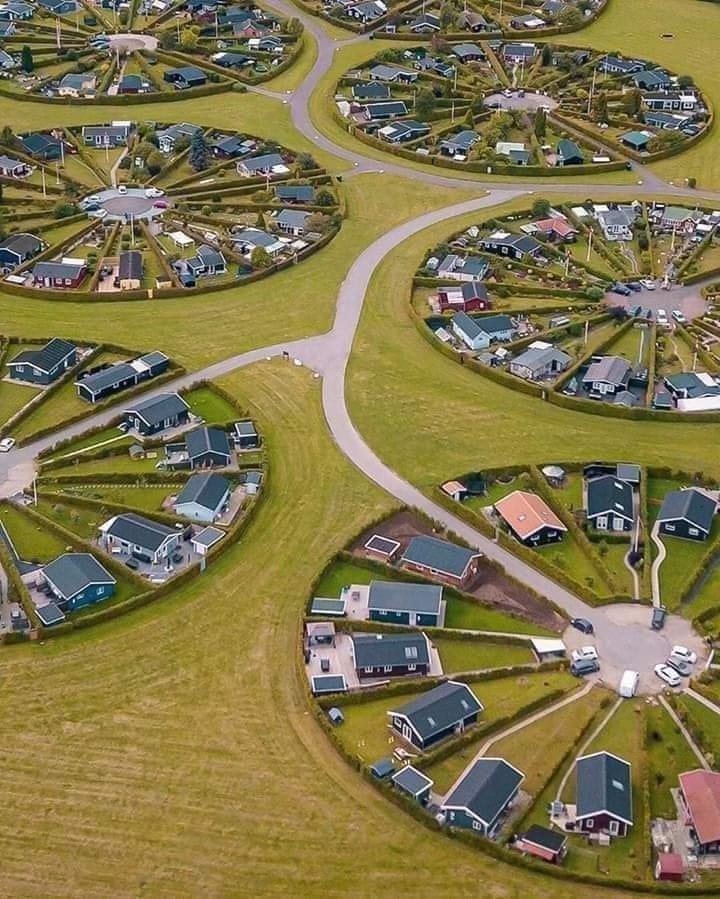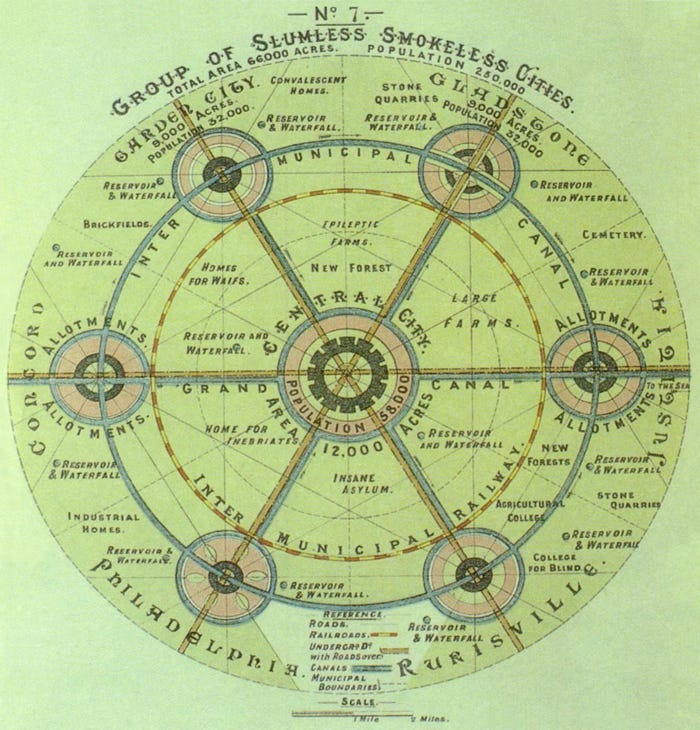
August 2021 | Eyesore
Commentary on architectural blunders in monthly serial.
Behold the Brøndby Garden City in Denmark, an experiment that has been around since 1964, but worth discussing in these day of hysterical Green-O-mania, the social response to climate change activism aggravated by worsening resource and capital scarcity, plus pandemic disease, political instability, and population overshoot — in short, a good old long emergency. I bring it up this month because it is just the sort of enviro hoo-hah based on good intentions (gone awry) that we’d better avoid in the time ahead.
The idea behind this is clearly to create a superior human habitat, a place where fresh air, daylight, and nature will enhance daily life. The problem is that Brøndby Garden City delivers this in the form of a diagram, and living in a diagram is nothing like living in a place that has developed organically and emergently over time, in response to historical changes of all kinds — social, technological, political, geophysical, and so on.
The fad for garden cities really got cracking in late 19th century England, precisely because the burgeoning cities of London, Manchester, Liverpool, et cetera, had achieved a ghastly quality of industrial over-growth with all the obnoxious side effects of hyper-congestion, smoke, odors, noise, disease, and crime, and the prospect was for even greater industrial expansion in the developed nations, which now had to be accommodated super-rationally so as not to repeat the awful evolution of the old cities. Hence, a species of intellectuals came along specializing in “land-use” to figure out how to optimize the assignment of space for homes, manufacturing, farming, and civic leisure, turning their theories into diagrams. For instance, the leading light of the movement, one Ebenezer Howard, and his attempt to depict such a scheme:
Notice the same circular motif as in Denmark’s Brøndby — perhaps expressing something hard-wired in the human brain that vibrates to the cycles, spheres, orbits, and circles of the cosmos. Anyway, the point is that a diagram is an abstraction and people cannot live in abstractions, and that is why the garden city movement ended up more a less a dud.
Getting back to Brøndby, notice how it actually turned out functionally: a car-dependent, single-use set of cul-de-sac subdivisions, not unlike the more informal blob-like cul-de-sac subdivisions of dear old suburban America. Note, too, that the leftover land around the circular subdivisions has no apparent civic purpose. They are not parks, gardens, ballfields, parade grounds or… anything… just “open space” a meaningless abstract representation of “nature” — which, incidentally, requires de-naturing (i.e., mowing) at regular intervals.
I know, it’s Denmark, which pop-star Randy Newman once called “a cute little country,” and they have that have that Euro-glow of enviro-super-sensitivity and all… but Brøndby was a dumb project and remains dumb… and if you’re in the business of designing human habitats to meet the needs of the future, try to avoid putting people in diagrams.
Thanks to Ryan Tiefen for the nomination.








